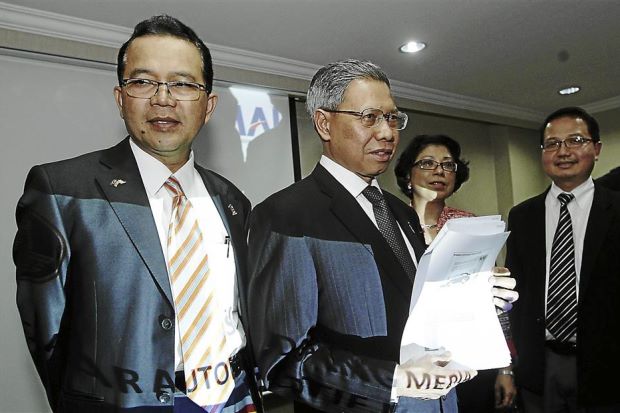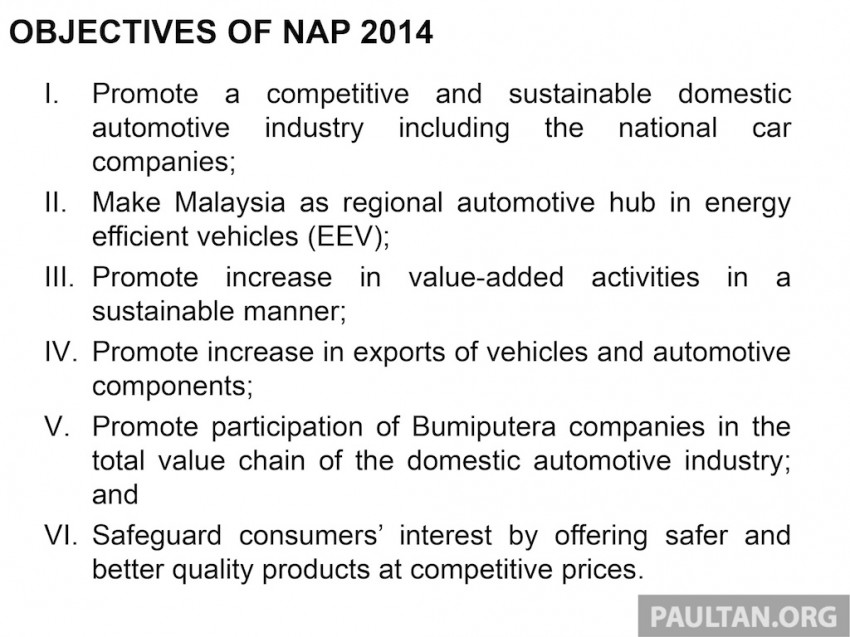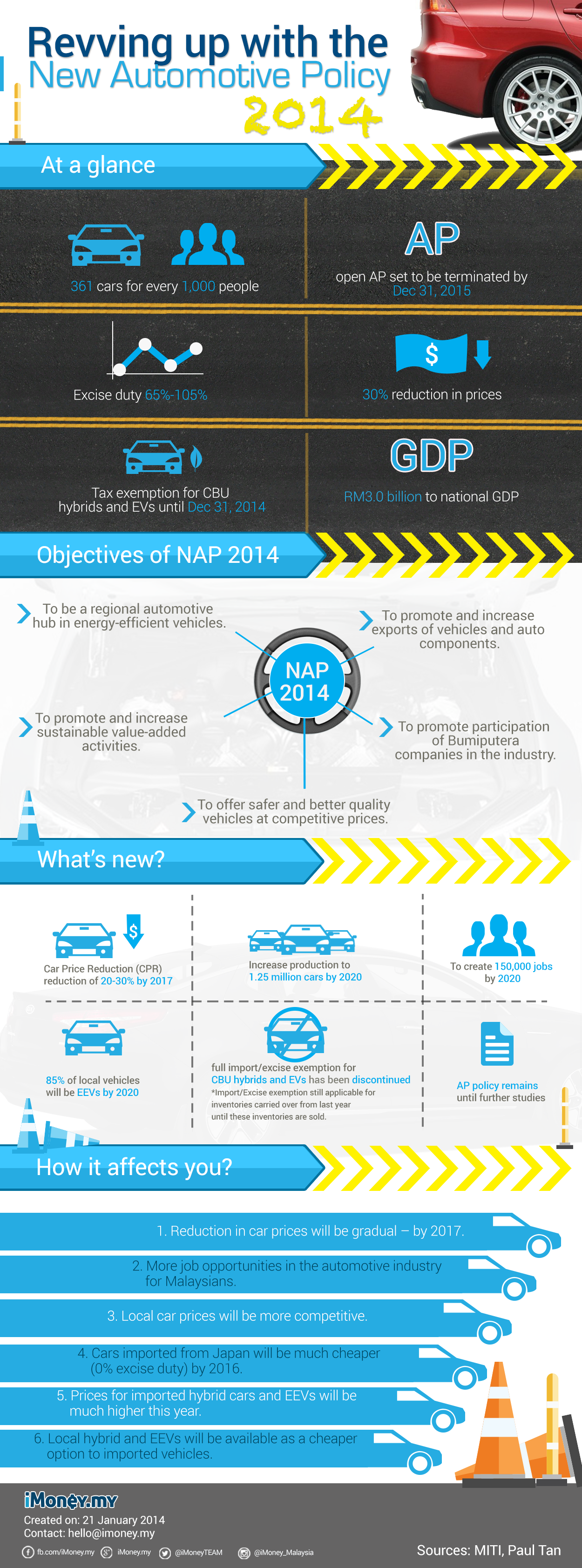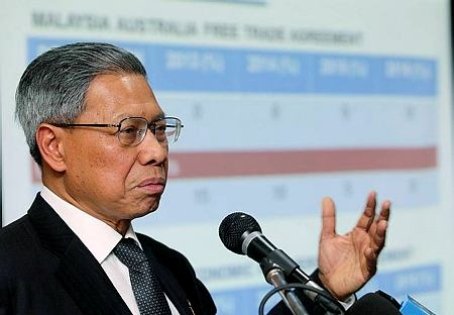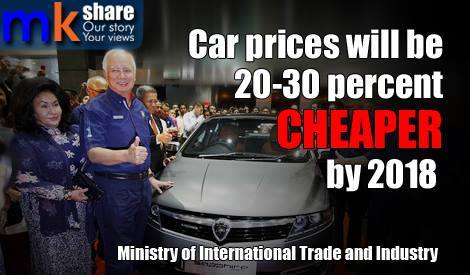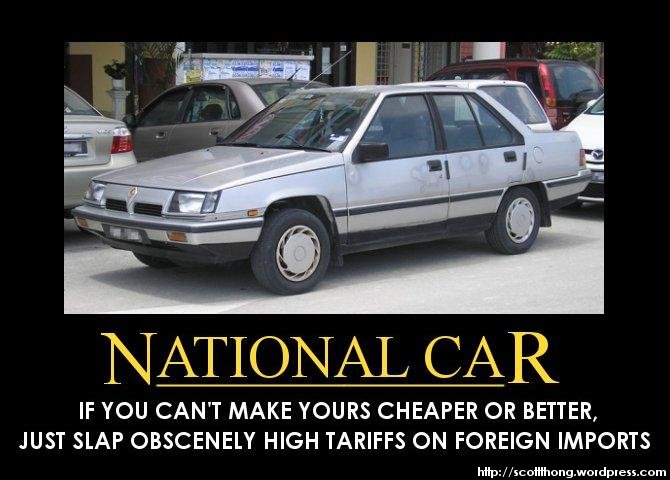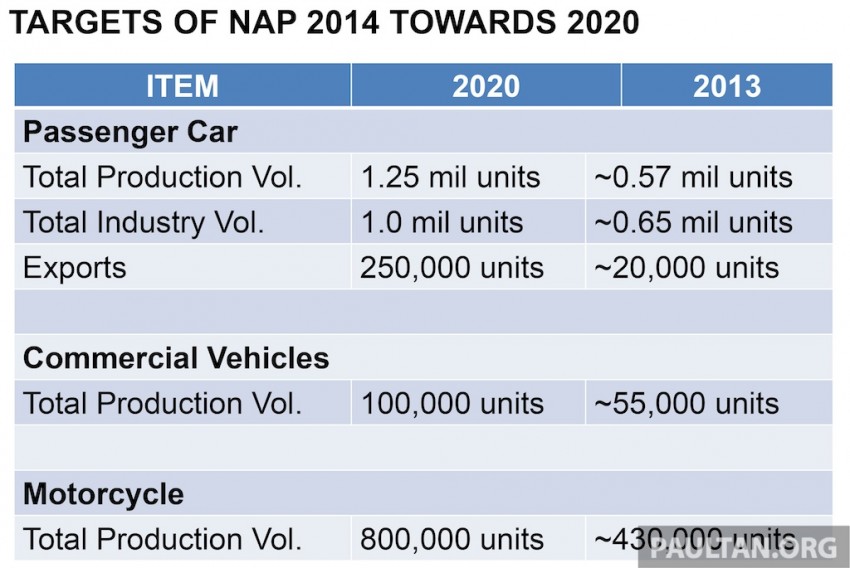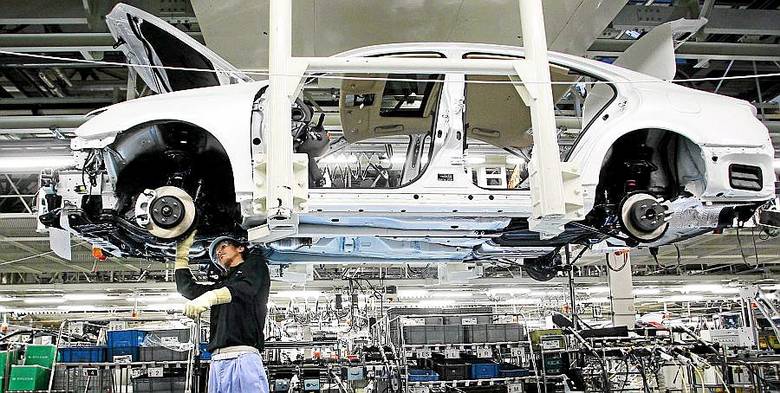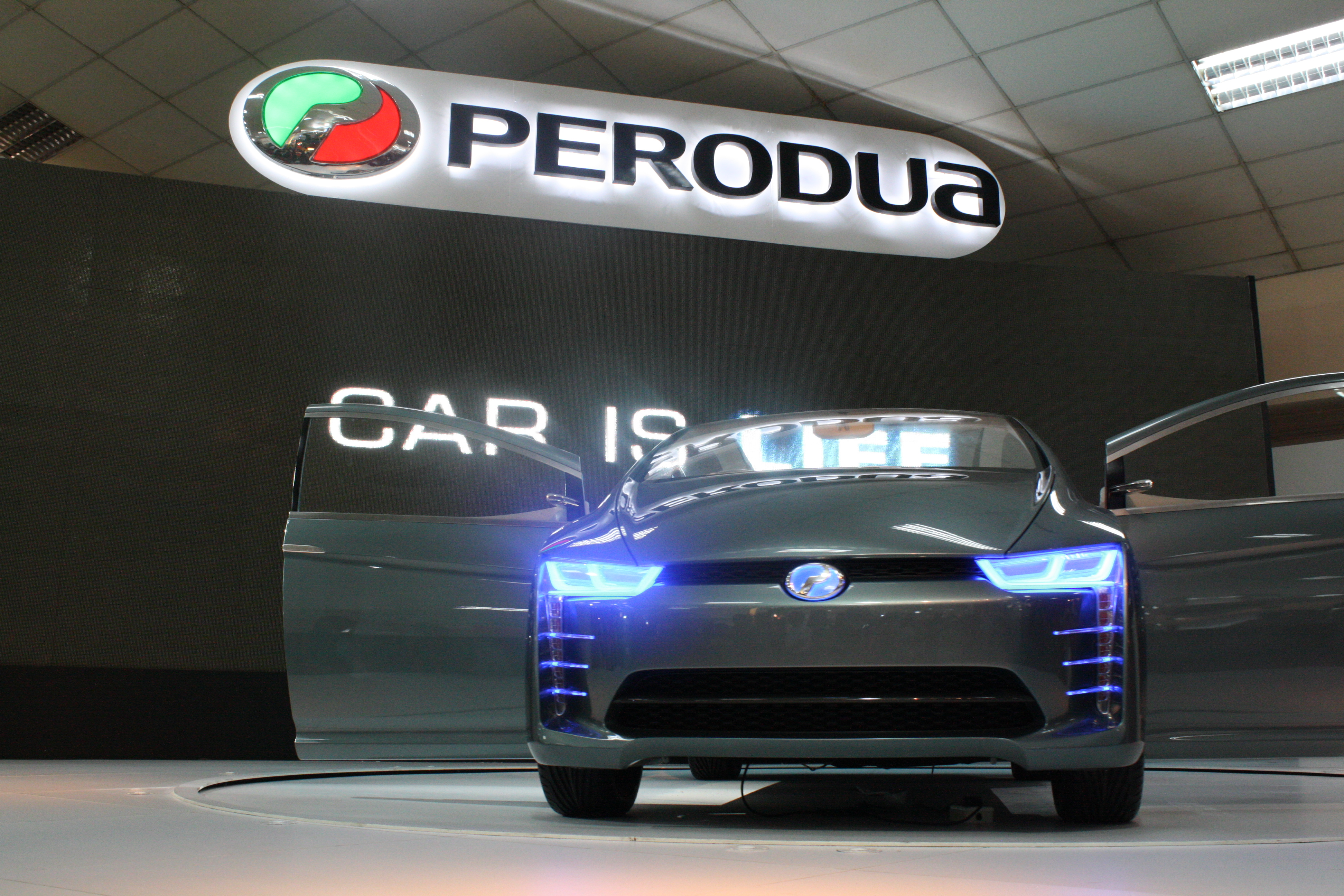The 9 Highlights Of The National Automotive Policy (NAP 2014) You Should Know
The newly unveiled National Automotive Policy 2014 is set to reduce car prices by welcoming more competition into the market.
The National Automotive Policy 2014 (NAP 2014) Was Unveiled On 20 January 2014 By The International Trade and Industry Minister Datuk Seri Mustapa Mohamed
More incentives: (from left) International Trade and Industry deputy minister Datuk Hamim Samuri, Mustapa, secretary general of the ministry Datuk Dr Rebecca Fatima Sta Maria and Malaysia Automotive Institute CEO Mohammad Madani Sahari at the unveiling of NAP 2014.
Image via thestar.com.myThe NAP 2014 Aims To Promote A Competitive And Sustainable Domestic Automotive Industry In Malaysia.
Image via paultan.orgThe revised National Automotive Policy (NAP) 2014 unveiled today aims to make Malaysia the hub for energy-efficient vehicles (EEVs) and to fulfil the Barisan Nasional’s general election promise to reduce car prices between 20 per cent and 30 per cent over the next five years.
Under the...
 mynewshub.my
mynewshub.my
The NAP was was introduced in 2006 to help regulate the local automotive industry and help turn it into a regional, if not global, hub. In 2009, it was reviewed to better reflect the changes in the automotive industry.
thestar.com.myThe NAP 2014 Aims To Promote A Competitive And Sustainable Domestic Automotive Industry In Malaysia. Among The Highlights Of The NAP 2014 Are:
1. RM2 Billion Worth Of Soft Loans And Grants Have Been Allocated For Automotive Infrastructure And Human Capital Development
International Trade and Industry Minister Datuk Seri Mustapa Mohamed at the anouncement of the National Automotive Policy (NAP) 2014 at Matrade.
Image via googleusercontent.comInternational Trade and Industry Minister Datuk Seri Mustapa Mohamed, who unveiled NAP 2014 yesterday, said the Government would be allocating up to RM1.89bil in soft loans and RM175mil in grants.
thestar.com.my“The loans would be for the development of tool, dies and moulds, component technology pre-commercialisation, competitiveness-related activities, distribution infrastructure establishment as well as the development of energy-efficient vehicle (EEV) infrastructure,” he said.
Grants, meanwhile, will be allocated for human capital and bumiputra development.
thestar.com.my2. A Car Price Reduction Framework Has Been Developed To Fulfil The Promise Of Lowering Car Prices By 20% To 30% By The End Of 2018
A Car Price Reduction Framework Has Been Developed To Fulfil The Promise Of Reducing The Prices Of Cars By 20% To 30% By The End Of 2018
Image via akamaihd.net“The ministry of international trade and industry (Miti) has developed a car price reduction framework. The framework has a number of measures, but the main thing is the opening up of the Malaysian automotive market,” Minister Datuk Seri Mustapa Mohamed told a press conference on the NAP.
yahoo.comOn the price reduction, some locally assembled car manufacturers have reduced the price in stages.
Among them are Honda Jazz (reduced to 17 percent), Nissan Sentra (13 percent), Proton Saga (12 percent) and Perodua Alza (12 percent).
3. Liberalisation Of The Automotive Market To Introduce More New Car Models And Variants At More Competitive Prices
Liberalisation Of The Automotive Market To Introduce More New Car Models And Variants At More Competitive Prices
Image via motortrader.com.my“Liberalisation creates a more competitive environment that would enable greater market forces that lead to more competitive prices.”
yahoo.com4. The Government Is Constantly Reviewing Its Fiscal Position And Is Open To The Possibility Of Reducing Taxes When The Fiscal Situation Permits
5. Malaysia To Be Made Into A Regional Hub For Energy Efficient Vehicles (EEV) Including The Production Of Hybrid And Electric Vehicles (EV)
The government is expected to open EEV production license as a whole.
The license will only be given to car installations with an engine capacity of not less than 1800cc and the price should be more than RM150, 000 per unit, according to sources.
In order to achieve the objective of making Malaysia as the regional hub for EEV vehicles, the government is expected to open
Manufacturing License (ML) applications to foreign automotive companies in an effort to encourage local car manufacturers in this segment.
Mustapa said the main objectives of the NAP 2014 was to turn Malaysia into a regional automotive hub for EEV and promote a competitive and sustainable domestic automotive industry. He said the Government would provide customised incentives for EEV-related foreign direct investment and domestic direct investment.
thestar.com.my6. Existing Excise Duties And Import Tax Exemptions For Hybrid And Electric Vehicles Will Be Discontinued For Imported Models
Existing Excise Duties And Import Tax Exemptions For Hybrid And Electric Vehicles Will Be Discontinued For Imported Models
Image via savemoney.myThe present excise duty and import tax exemptions for hybrid and electric vehicles will be discontinued for imported models. They will, however, be extended to models assembled in Malaysia until Dec 31, 2015 for hybrids and Dec 31, 2017 for electric vehicles. The reason, said Mustapa, is that the imported models do not contribute as much to the economy as the locally assembled ones.
7. Create Additional Business And Manufacturing Jobs Opportunities By 2020
The new NAP aims to create an additional 70,000 manufacturing jobs by 2020 (2013: 250,000 existing jobs); 80,000 additional aftermarket jobs (2013: 300,000 existing jobs); RM10 billion in exports of parts and components (2013:RM5 billion); and RM2 billion in exports of recycled materials and remanufactured components (from nothing today).
8. Bumiputera Companies Will Be Encouraged To Participate In The Total Value Chain Of The Domestic Automotive Industry
To encourage participation of Bumiputera companies in total value chain of the domestic automotive industry. On Approved Permits (APs), the government has decided an indepth study to be undertaken to asses the impact of the termination of Bumiputera participation in the auto industry.
Bumiputera Companies Will Be Encouraged To Participate In The Total Value Chain Of The Domestic Automotive Industry
Image via paultan.org9. A Total Production Volume Of 1.25 Million Units Of Vehicles In 2020
In terms of industry volume, the new NAP targets total production volume of 1.25 million units of vehicles in 2020 (2013: 570,000 units), with 250,000 export units (2013: 20,000 units). It also aims to produce 100,000 units of commercial vehicles (2013: 55,000) and 800,000 units of motorcycles in 2020 (2013: 430,000).
yahoo.comHow Will The NAP 2014 Affect The National Carmaker? Proton Does Not Seem To Be Worried Of The Upcoming Competition Despite The Greater Liberalisation Of The Automotive Industry.
Proton chairman Khamil Jamil speaks to reporters after a media briefing regarding the National Automotive Policy (NAP) at Menara Matrade, Jalan Duta, Kuala Lumpur yesterday.
Image via themalaysianinsider.comNational carmaker Proton shrugged off concerns of its future, insisting that it will "survive" the competition from foreign cars producers with the revised National Automotive Policy (NAP) 2014.
themalaysianinsider.comProton chairman Tan Sri Khamil Jamil said the national car manufacturer will continue to grow, despite being criticised in the past that it had relied too much on the government's protection.
"Proton will continue to survive. Together with Perodua, Proton will continue to be relevant in the automotive industry." "The two national automotive companies will play a vibrant role and be the focal point to improve and enhance under the NAP."
themalaysianinsider.comProton has released a media statement following the National Automotive Policy (NAP 2014) announcement. The gist of it is, as the only full-fledged car manufacturer in the region (the company’s own words, not ours), Proton is in full support of the Malaysian Government’s initiatives, adding that the move in is line with the company’s shared vision for the industry.
paultan.orgBeyond that, the local carmaker will also be looking at expanding opportunities to grow abroad. This will be executed in stages, through direct CBU exports and CKD programmes at selected countries.
As for the Energy Efficient Vehicle (EEV) policy, Proton says it’s in the midst of investing in R&D activities involving the development of “advanced powertrains, a new engine family as well as hybrid and other alternative propulsion systems.”
paultan.orgPerodua Is Considering To Enter The Energy Efficient Vehicle Market To Take Advantage Of The Incentives Provided By The NAP 2014
Perodua president and chief executive officer Datuk Aminar Rashid Salleh said the company is mulling over getting into the energy efficient vehicles (EEV) market as the NAP 2014 provided several incentives for manufacturers.
themalaysianinsider.com"One of the reasons why we are not in the hybrid and electric cars segment was partly due to the high investment costs, which may translate to higher car prices. Whereas our objective was to produce affordable quality cars.
"Another reason was the weight of battery where it is very important to make compact cars light for better fuel efficiency," he said.
themalaysianinsider.comPerodua Is Considering To Enter The Energy Efficient Vehicle Market To Take Advantage Of The Incentives Provided By The NAP 2014
Image via says.com